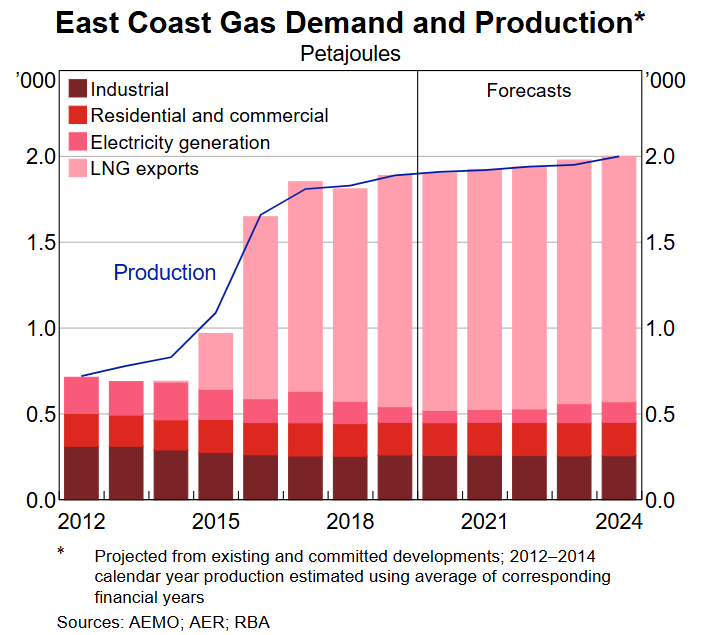The AFR reports that global supply of liquified natural gas (LNG) is expected to ramp up in 2025, which is likely to weigh on local producers and the federal government’s revenue.
The increase in production, mostly from North America, had been slated to occur in 2024, but delays to a number of LNG projects resulted in this being pushed back to 2025.
EnergyQuest notes that global output of LNG is expected to rise by about 50 million tonnes per annum from 2026, while Saul Kavonic from MST Marquee says there is likely to be a global oversupply of LNG beyond 2026.
Lower global gas prices are expected by the government to drive a $5 billion dip in Australia’s LNG earnings this financial year, to around $64 billion. Earnings are then projected to fall to $60 billion in 2025–26, down from a peak of about $92 billion in 2022–23.
The forecasts of a global supply glut come ahead of the ACCC’s next report on the east coast gas market, which is widely expected to forecast shortages of domestic gas on the east coast as early as this coming winter.
East coast Australia exports nearly three quarters of its gas, most of which goes to China.

Therefore, despite exporting the majority of its gas, the east coast is faced with a peculiar situation where it faces shortages domestically and soaring prices.
Could you imagine a middle-eastern oil-exporting nation having to import oil for domestic use and charging its residents $2 a litre for petrol? This is effectively what east coast Australia is doing.
The solutions to the problem are obvious:
- Reserve enough East Coast gas for domestic use and set the price at an affordable level using classic cost-plus pricing.
- Either create a second north-south pipeline or more southern storage facilities that can be filled in the off-season and used in the high season.
- Explore for additional onshore and offshore gas deposits to feed the domestic market. Any new initiative should be government-owned and operated.
Instead, LNG import terminals are being developed in NSW, Victoria, and South Australia, which will drive domestic gas and electricity prices even higher.
Australian energy policy is a farce.

